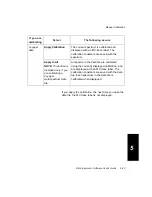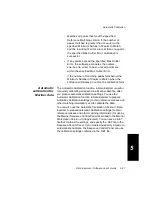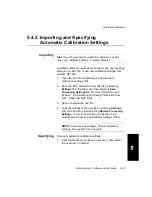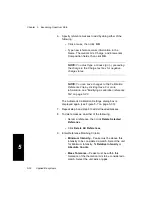
Chapter 5 Examining Spectrum Data
5-30
Applied Biosystems
5
2.
From the Peaks menu, select Peak Label, then set the
Mass Label Type to Centroid.
NOTE: For spectra containing broad peaks that have
unresolved adducts or impurities such as proteins, you
may obtain better results if you use apex instead of
centroid settings.
3.
From the Process menu, select Mass Calibration, then
select Automatic Calibration.
The Automatic Calibration Settings dialog box is
displayed (Figure 5-7).
Figure 5-7 Automatic Calibration Settings Dialog Box
4.
Click Select New File, then select a calibration reference
file. For information on creating a reference file, see
Section 5.3.3, Creating or Modifying a
Calibration Reference File (.REF).
Summary of Contents for Data Explorer 4 Series
Page 1: ...Data Explorer Software Version 4 Series Software User Guide ...
Page 10: ...Table of Contents x Applied Biosystems ...
Page 56: ...Chapter 1 Data Explorer Basics 1 42 Applied Biosystems 1 ...
Page 98: ...Chapter 2 Using Chromatogram and Spectrum Windows 2 42 Applied Biosystems 2 ...
Page 172: ...Chapter 3 Peak Detection and Labeling 3 74 Applied Biosystems 3 ...
Page 204: ...Chapter 4 Examining Chromatogram Data 4 32 Applied Biosystems 4 ...
Page 270: ...Chapter 5 Examining Spectrum Data 5 66 Applied Biosystems 5 ...
Page 316: ...Chapter 6 Using Tools and Applications 6 46 Applied Biosystems 6 ...
Page 384: ...Chapter 9 Troubleshooting 9 22 Applied Biosystems 9 ...
Page 388: ...Appendix A Warranty A 4 Applied Biosystems A ...
Page 416: ...Appendix C Data Explorer Toolbox Visual Basic Macros C 20 Applied Biosystems C ...






























